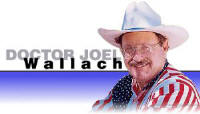|
IMPORTANCE:
Is an antioxidant nutrient; necessary for protein synthesis; wound healing;
vital for the development of the reproductive organs, prostate functions
and male hormone activity; it governs the contractility of muscles;
important for blood stability; maintains the body's alkaline balance;
helps in normal tissue function; aids in the digestion and metabolism
of phosphorus.
It's a MINERAL essential to the synthesis of DNA and RNA, of proteins,
insulin and sperm. The body needs zinc, too, to metabolize CARBOHYDRATES,
FATS, PROTEIN and alcohol; to dispose of carbon dioxide; to make good
use of VITAMIN A. More than seventy different enzymes require zinc to
do their appointed work.
ZINC DEFICIENCY SYMPTOMS:
May result in delayed sexual maturity, prolonged healing wounds, white
spots on finger nails, retarded growth, stretch marks, fatigue, decreased
alertness, susceptibility to infections.
An early sign of zinc deficiency in animals is decreased food intake.
It is a type II deficiency since a reduction in growth occurs without
an apparent reduction in tissue zinc. Reduced immune function, involving
B cell and T cell depletion and/or reduced activity, and skin lesions
associated with secondary infections are common findings. Chronic zinc
deficiency in humans results in reduced growth (dwarfism) and sexual
development which are reversible by raising zinc intake. Signs of zinc
deficiency may reflect its involvement in cell proliferation and differentiation.
Growth, behavioral abnormalities and cognition may respond to zinc supplementation
in some populations. Many clinical findings that relate to depressed
growth or immunity may have marginal zinc deficiency as a secondary
cause.
ZINC Toxicity:
Acute zinc toxicity is characterized by gastric distress, dizziness
and nausea. Symptoms of chronic toxicity include gastric problems, decreased
serum ceruloplasmin activity and hypocupremia, decreased lymphocyte
stimulation to PHA and reduced HDL cholesterol. An emetic effect occurs
at >150 mg Zn/day.
ZINC:
Zinc (Zn) is an essential trace mineral. The human body has between
1.5-2.5 g Zn, making it nearly as abundant as iron. It is highly concentrated
in specialized areas of the brain, pancreas and adrenal gland, but is
present in all cells, particularly in the nucleus. Zinc has structural,
catalytic (enzymatic) and regulatory roles. About 1% of the human genome
codes for zinc finger proteins, where zinc provides a structural role
for regulatory functions. Over 60 enzymes require zinc for activity,
including the RNA polymerases. Zinc is actively taken up by synaptic
vesicles, supporting a role in neuronal activity and memory. Zinc metabolism
is altered during disease and physical stress through hormones, cytokines
and toxins, presumably as part of a host defense response.
This element is important in wound healing. It also functions as an
anti- oxidant. It is helpful in the treatment of acne. It hastens healing
of peptic ulcer disease and burns. The recommended dose is 100 mg per
day. Plant chelated zinc will not cause the gastrointestinal distress
the inorganic clay/acid derived zinc will. Therefore, request a plant
derived colloidal zinc rather than zinc sulfate which is inorganic.
Clinical uses:
Zinc is not widely used as a therapeutic agent except as an ingredient
of topical medication. Oral zinc may be used to treat idiopathic skin
lesions, some inflammatory conditions and depressed immunity. Zinc is
usually indicated in rehabilitation therapy from malnutrition and/or
malabsorption in children and adults, used in feeding programs for premature
infants and neonates and is also a component of TPN solutions. Supplemental
zinc reduces acute diarrhea and depressed immunity.
Diet recommendations:
The Recommended Dietary Allowances (RDAs) are: infants, 5 mg/day; children
<10 years, 10 mg/day; males >10 years, 15 mg/day; females >10 years,
12 mg/day; pregnancy, 15 mg/day; and lactation, 0-6 mo., 19 mg/day;
7-12 mo., 16 mg/day.
| U.S. RDA FOR ZINC |
babies:
birth to 1 year |
5 mg per day |
children:
1 10 years |
10 mg per day |
men and boys:
11 to 51 years |
15 mg per day |
women and girls:
11 to 51 years |
12 mg per day |
| pregnant women |
15 mg per day |
nursing mothers:
first 6 months
second 6 months |
19 mg per day
16 mg per day |
Food sources:
Zinc is highly abundant in red and white meat and shellfish. Foods of
plant origin except the embryo portion of grains, e.g., wheat germ,
are low in zinc. Phytic acid in plants like soybeans binds zinc, forming
an insoluble complex that lowers bioavailability. Other inhibitors of
absorption are fiber, polyphenols and a high intake of calcium. Zinc
from human milk is more absorbable than that from infant formulas or
cow's milk.
Toxicity:
Acute zinc toxicity is characterized by gastric distress, dizziness
and nausea. Symptoms of chronic toxicity include gastric problems, decreased
serum ceruloplasmin activity and hypocupremia, decreased lymphocyte
stimulation to PHA and reduced HDL cholesterol. An emetic effect occurs
at >150 mg Zn/day.
Recent research:
Experiments with transgenic and knock out mice are defining the role
for zinc metalloproteins in metabolism, development and cytoprotection.
Zinc as a component of an antioxidant system is being evaluated. Zinc
as a factor in Ab amyloid protein aggregation
leading to plaque formation found in Alzheimer's patients is under investigation.
Supplemental zinc has been proven to be of benefit in treatment of acute
diarrhea in infants and children. Fluorescent zinc indicators are in
use to define zinc functions at the cellular level.
For further information:
Cousins, R.J. (1996) Zinc. In: Present Knowledge in Nutrition (Filer,
L.J. & Ziegler, E.E., eds.), 7th Ed., pp. 293-306. International Life
Sciences Institute Press, Washington, DC
King, J.C. & C.L. Keen (1994) Zinc. In: Modern Nutrition in Health
and Disease, (M.E. Shils, J.A. Olson & M. Shike, eds.), 8th ed., pp.
214-230. Lea & Febiger, Philadelphia, PA.
ONLINE ORDER
Toll Free
1-888-441-4184
RELATED ARTICLES:
VITAMIN E: another
free radical scavenger
What is the use and function of COPPER ?
MANGANESE
Related Articles
Colloidal Minerals: ZINC
GlucoGel
Colloidal Minerals:Function of COPPER ?
Boron CALCIUM: boron calcium
Colloidal Minerals Ultimate Daily Vitamins
Colloidal Minerals:What is the use of MAGNESIUM ?
|
 888-441-4184
888-441-4184